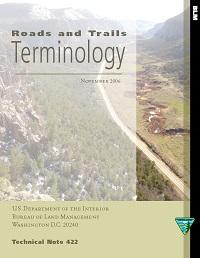Roads and Trails Terminology

The Bureau of Land Management’s (BLM) transportation system represents one of the most critical assets in the accomplishment of the BLM’s mission to manage public lands. It affords entry for public access and provides the infrastructure that supports uses ranging from recreation to commercial activity and is the primary means of access to the 261.8 million acres under BLM jurisdiction.
Requirements associated with the effective stewardship of public lands, such as the Government Performance and Results Act, Federal Accounting Standards Advisory Board, Federal Land Policy and Management Act, and Off-Road Vehicle Executive Orders, continue to focus expectations internally and externally on a coordinated, consistent, and cohesive approach to the management of transportation-related linear features—generically referred to as routes—on public lands. The rationale for this effort is that the broad effect of the transportation system across the BLM’s missions, strategic goals, and programs makes a consistent, organization-wide approach, rooted in common terms and definitions, an essential part of the management of public lands.
Several terms are used in reference to roads and trails on BLM lands. For purposes of this report, the term “linear features” has been used to describe transportation system-related “features,” from engineered roadways with asphalt surfaces through challenging trails accessible only to nonmotorized traffic; “linear features” includes designated and non-designated assets. The implementation of the Facility Asset Management System (FAMS) highlighted the need for a standard lexicon.
